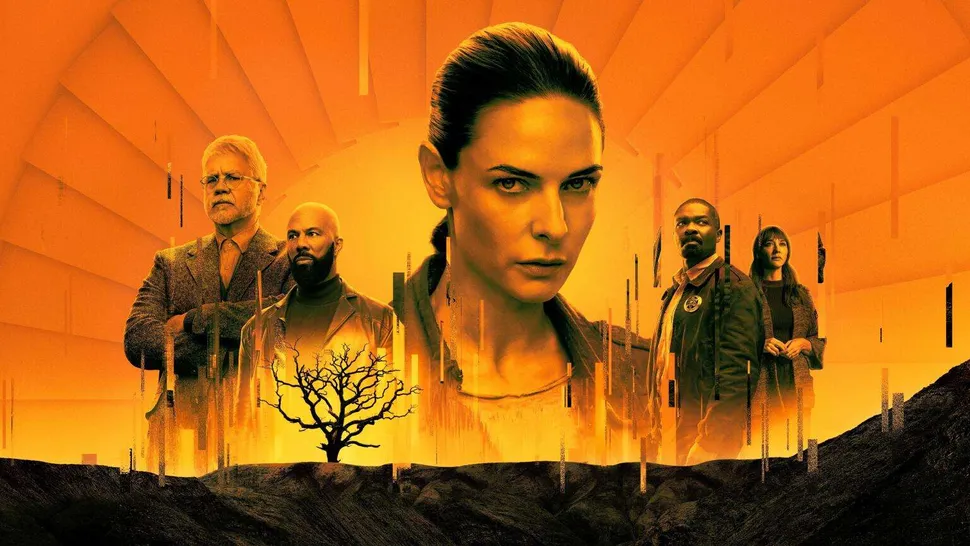The original Halo: Combat Evolved, released in 2001, was a groundbreaking game that changed the landscape of first-person shooters forever. But by 2003, the franchise had expanded beyond gameplay, growing into a pop culture phenomenon. A unique part of this universe was the introduction and development of game icons and banners — visual assets that players and fans quickly recognized and associated with the Halo series. These icons and banners promoted the game and became symbols of the Halo community. This article dives deep into the fascinating world of [Halo (2003) game icon banners], exploring their evolution, impact, and legacy.
The Importance of Visual Identity in Gaming
In the early 2000s, gaming was moving into a new era. Graphics were improving, multiplayer gameplay was rising, and communities were forming around iconic games. For a game like Halo: Combat Evolved, its success didn’t rely solely on its storyline and gameplay mechanics but also on its powerful visual identity. Here’s why visual assets like [Halo (2003) game icons banners] played such a significant role:
- Brand Recognition: The symbols, icons, and banners associated with Halo became instantly recognizable, helping to set the game apart from other titles.
- Community Bonding: These visuals gave the fan community symbols to rally around, making the Halo experience feel like more than just a game.
- Marketing Power: The banners and icons drew players in and conveyed the spirit of the game, building anticipation and excitement.
From icons on loading screens to promotional banners used at events, [Halo (2003) game icon banners] became a powerful tool for shaping the brand. Let’s look at the critical components of these visual elements and how they contributed to Halo’s legacy.
What Are Halo (2003) Game Icons Banners?
In simple terms, game icons are small, recognizable images representing aspects of a game, such as emblems, symbols, or icons in menus. Banners are more considerable visual assets for promotional or in-game displays, often featuring iconic characters or scenes. In the context of Halo, these icons and banners served several purposes:
- Game Icons: These include logos, emblem icons for multiplayer, loading screen icons, and menu icons. In Halo, icons were typically minimalistic but packed with meaning, often featuring military or futuristic designs.
- Banners: These were larger images, often used for promotion or as backgrounds on loading screens. They highlighted significant game characters like Master Chief, various alien species, or scenes from the game world.
Icons and banners were essential in creating Halo’s distinct look and feel.
The Evolution of Halo (2003) Game Icons Banners
The Halo series is known for its continuous evolution in both graphics and storytelling. As a result, the [Halo (2003) game icon banners] also evolved, adapting to new themes, improved graphics, and changing audience expectations. Here’s a look at how they transformed:
Original Halo: Combat Evolved Icons and Banners
The first Halo game, released in 2001, had simple but powerful visuals. The icons and banners were heavily inspired by military symbols, echoing the UNSC (United Nations Space Command) aesthetic. Most icons were monochromatic, featuring the iconic UNSC eagle symbol or futuristic shapes that conveyed the sci-fi nature of the game.
Vital visual features included:
- Military and Sci-Fi Themes: Dark colors, metal textures, and bold lines.
- UNSC Emblem: An emblem of power, unity, and military might.
- Spartan Armor Iconography: The Master Chief’s helmet became an icon, symbolizing the protagonist’s strength and mystery.
Expansion and Customization in 2003
By 2003, Halo’s multiplayer community had expanded significantly, and Bungie (the developer) started experimenting with customizable player icons and banners. This was a pivotal year for [Halo (2003) game icon banners], as it introduced options for players to personalize their in-game experience. Icons and banners became more than just decorative elements; they represented individual players’ identities.
New features included:
- Player Emblems: Players could choose or customize their emblems, which appeared in multiplayer lobbies alongside their names.
- Clan Banners: These were giant banners representing entire teams or clans, creating a sense of unity and team identity.
- More Color Variants: With customizable colors, players could select hues that matched their personalities or styles.
This icon and banner variety expansion helped foster a sense of individuality and community among players.
Design Elements of Halo (2003) Game Icons Banners
The design of Halo’s icons and banners wasn’t just random artwork; it was crafted to reflect the world and themes of Halo. Here are some key elements that defined [Halo (2003) game icons banners]:
- Symbolism
Halo’s universe is rich with symbolism, from the ancient Forerunner civilization to the human-alien conflict. Icons often contained symbols with deeper meanings tied to the game’s lore. For example:
- Halo Rings: The symbol of the Halo rings was often used in banners to represent the central mystery.
- Covenant Symbols: The alien Covenant faction had its own distinct iconography, with glyphs and symbols conveying its religious fervor and alien nature.
- Color Schemes
Color significantly set the mood for [Halo (2003) game icons banners]. Generally, Bungie stuck with a muted color palette to maintain the severe and aggressive tone of the game.
- Greens and Blues: These colors represented humanity and the UNSC forces.
- Purples and Golds: These were often associated with the Covenant, emphasizing their otherworldly, regal nature.
- Dark Shades: Black, gray, and dark metal textures conveyed the severe tone of the Halo universe.
- Minimalistic Style
The design for Halo icons and banners was minimalistic, especially in 2003. This was partially due to technical limitations but also reflected the game’s military theme. The simplicity allowed icons to be easily recognizable, even in small sizes.
- Character Focus
Critical characters like the Master Chief and the Arbiter and iconic enemies such as the Elites or Hunters often appeared in banners. This character-focused design helped fans connect with the game’s protagonists and antagonists.
Table of Key Halo (2003) Game Icons Banners
Below is a table highlighting some of the key icons and banners from Halo’s early years, including 2003.
Icon/Banner NameDescriptionPurposeKey Features
UNSC Eagle Emblem Military symbol of humanity’s forces Game menus, loading screens Bold, sharp lines, eagle motif
Master Chief Helmet Icon Represents the protagonist Player emblem, loading screens Iconic green helmet with visor.
Covenant Glyphs Symbols for the alien Covenant Multiplayer emblems, banners Intricate, alien designs
The Halo Ring Symbol Represents the Halo installation Game menus, promotional material, Circular shape, and mysterious aura.
Clan Banners Customizable banners for multiplayer teams Multiplayer lobbies Team colors, clan logos
Forerunner Symbol Ancient symbol of the Forerunner race Loading screens, banners Mysterious, geometric patterns
Why [Halo (2003) Game Icons Banners] Matter to Fans
Visual elements in games can leave a lasting impact on fans. For Halo players, the icons and banners from 2003 hold a particular nostalgia. Here’s why these visual assets still matter:
- Nostalgia: Many players fondly remember the early days of Halo multiplayer, where these icons and banners were ever-present.
- Community Identity: Symbols like the UNSC emblem or Master Chief’s helmet have become markers of the Halo community. They’re instantly recognizable and give fans a way to show their love for the game.
- In-Game Achievements: Icons and banners in Halo sometimes represented achievements or ranks, giving players something to strive for and show off.
For long-time fans, seeing these icons is like walking down memory lane. They’re not just visuals but symbols of countless battles fought and friendships formed.
Legacy of Halo (2003) Game Icons Banners in Modern Halo Games
As the Halo series has evolved, so have its icons and banners. However, modern Halo games still pay homage to the original designs. For example:
- Classic Icons in New Games: Newer Halo games include “vintage” icons from the early games, giving players a nostalgic option.
- Remastered Banners: With HD graphics, classic banners have been given new life, looking sharper while retaining the original design.
- Fan-Made Content: The Halo fan community continues to create fan art and customized icons inspired by the 2003 designs, keeping the legacy alive.
Tips for Creating Your Own Halo (2003) Game Icons Banners
If you’re a fan who wants to create custom icons or banners inspired by the original Halo designs, here are some tips:
- Stick to the Color Scheme: Use military greens, blues, and dark colors for UNSC themes or purples and golds for Covenant designs.
- Keep It Simple: Early Halo icons were minimalistic. Avoid cluttered designs to capture the authentic Halo aesthetic.
- Use Iconic Symbols: Try incorporating classic symbols like the UNSC eagle, Halo ring, or Master Chief’s helmet.
- Experiment with Fonts: Use bold, futuristic fonts that reflect the sci-fi theme of Halo.
With these tips, you can create designs that pay tribute to [Halo (2003) game icon banners].
Final Thoughts on Halo (2003) Game Icons Banners
The world of [Halo (2003) game icon banners] is a testament to the importance of visual identity in gaming. These icons and banners helped define Halo as a franchise and fostered a passionate community that remains strong today. From the UNSC emblem to the iconic Halo ring symbol, these visuals are more than just graphics; they’re pieces of gaming history. As the Halo series continues to evolve, these designs remain a beloved part of the game’s legacy, cherished by fans old and new.
Whether you’re a long-time fan or a newcomer to the series, understanding the history and significance of these icons and banners can deepen your appreciation for Halo and its impact on the gaming world. After all, every time we see that familiar Master Chief helmet or the mysterious Halo ring, we’re reminded of the incredible journey that began with [Halo (2003) game icons banners].





















